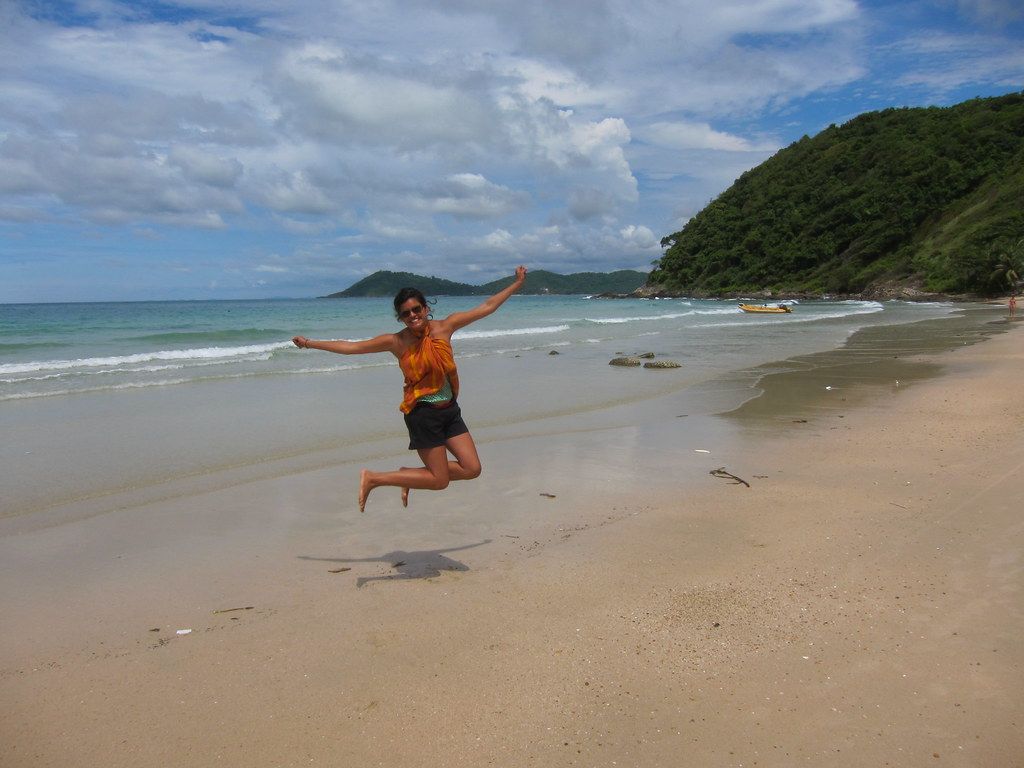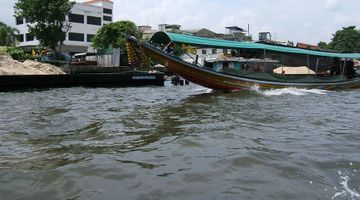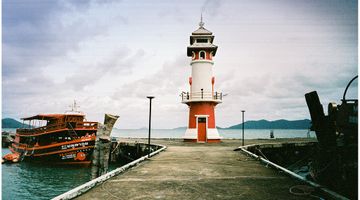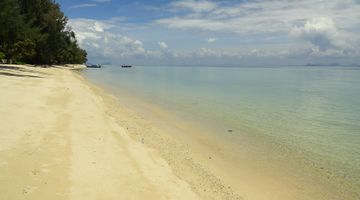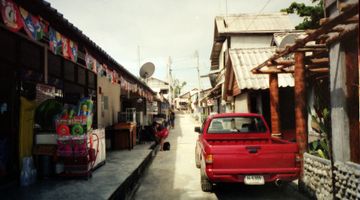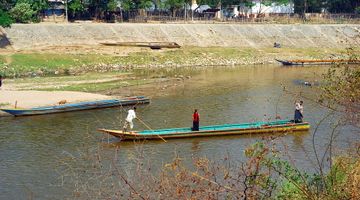Koh Samet Travel Guide
In a nutshell
It’s hard to believe that the beautiful tropical island of Koh Samet, located in the Gulf of Thailand, is just a couple of hours away from the chaos of Bangkok.
Why go to Koh Samet
Whilst some people do indeed travel there from the other Thai islands, it’s a resort that’s very popular for weekend trips from the capital with both locals and travellers to the Thailand making the journey. The island itself is known for its beauty, with white sandy beaches lining the coasts and striking clear blue seas.
The island is part of Khao Laem Ya-Mu Ko Samet National Park, and as such requires a fee to enter. For Thai residents the entrance fee is reasonable THB40, but the standard entry price for tourists is THB200 for adults and THB100 for children – neither Thai driving licence nor Thai work permits entitle you to get the Thai price.
There are reports that if you visit outside of high season then you can sometimes get away with not buying a ticket, but it’s best to assume that you have to so you can be on the safe side. If you arrive on the main pier and take a songthaew to get to your accommodation, you will inevitably pass the ticket office; or if you arrive on one of the beaches then you can expect one of the national park officers to approach you in order to ensure you pay the relevant fee. Some operators on the mainland include the entrance fee into their boat ticket, but we recommend buying your ticket yourself when on the island.
With 14 beautiful beaches dotted around the coast of Koh Samet, when it comes to things to see and do you’ll find that most people head here for some rest and relaxations and spend most of their time on the beach.
If you’re more active you might want to take a boat trip around the island and surrounding area, and it is also possible to do scuba diving. Exploring the island is another popular way to pass the time, either on foot, by bicycle or on a motorbike depending on your preference - and fitness levels!
When to go to Koh Samet
In terms of the best time to visit Koh Samet, the location of the island means that it misses most of the main monsoon weather and is warm and sunny year round. Whilst it does experience some rain and seasonal variations, the brilliant climate accounts for its attraction. Showers are more likely to take place between the months of May and October, with September usually ending up the rainiest month, whilst the sunniest months are October until February.
Where to stay on Koh Samet
If you plan to stay a few days on the island, which most people do, then it’s worth booking accommodation in advance, particularly in peak season when it can get extremely busy.
Most accommodation is on the beach and whilst there are plenty of options, it’s a notoriously expensive place to stay, especially by Thai standards. Its popularity with both tourists and locals means that it’s busy and all hotels, restaurants and tour agencies work hard to capitalise on this popularity! Most hotels, hostels and guesthouses are built around the beaches that line the eastern side of the island.
Where to eat in Koh Samet
There are a wealth of choices when it comes to food and drink on Koh Samet. Bear in mind though that it is definitely not a party island and whilst you can find spots to enjoy a few drinks, things are mostly wrapped up by 11pm.
As there are so many visitors to the island you can enjoy food from pretty much every cuisine you can imagine, while the island’s popularity with Thai travellers means that the Thai food is usually of a better quality than the other islands and main touristy destinations in Thailand.
How to get around Koh Samet
When you arrive on Koh Samet you’ll find it easy to get around. There’s pretty much just one road across the island, with some short dirt roads making their way off this to specific resorts.
Most of the island is walkable, although you can easily and cheaply rent a motorbike. If you choose to do this make sure to drive with extreme care as island roads are notoriously dangerous.
It’s also possible to get around by songthaew where you can negotiate for a private trip or just for short journeys across the island - these are usually green pick up trucks with some seating, but note that if prices for a ride from the pier are reasonable, they jump as soon as you need to hire a songthaew as a private taxi. Actually songthaews operate as shared public transport only when leaving the port; in all other cases they are taxis with fares starting from THB200 for the whole vehicle even if you need to get to one of the neighbouring beaches on Koh Samet, and reaching whooping THB600 if you are travelling across the island.
How to get to and from Koh Samet
As mentioned, most people travel the island from Bangkok – it’s around a 250km journey and very straightforward to do. It’s possible to take either a car or taxi to the pier where ferries to the island depart, which is called Rayong, with taxis from Bangkok costing between THB2500 and THB3500 – be careful if taking a metered taxi that the meter is running accurately. Some drivers may also expect a small tip.
Most people end up taking the bus either to Rayong or directly to one of the piers in Ban Phe – and there are many which make their way towards the pier on a daily basis. These cost from THB200 if you take an ordinary bus to THB350 if you opt for a minivan. Combination tickets from Bangkok to Koh Samet, including a speedboat, cost about THB500.
If you’re travelling from the south of Thailand or other islands, you can fly to Pattaya, which is one hour’s journey from the pier.
If travelling via Rayong, you’ll need first to take a songthaew to Ban Phe (THB50) and then to catch the boat across to Koh Samet and there are a few different options.
Ferries leave roughly every hour, cost up to THB70 for one way transport to the island and take around 40 minutes to get there. You can buy tickets for boats at the main ticket office on the pier and the ferry is the cheapest and safest way to reach your destination – most tourists opt for the ferry.
Note than in most cases you will be forced to by a return ticket. It is an open-date ticket and actually costs the same if buying separate one-way tickets. The only inconvenience is that there are different companies operating between Ban Phe and Koh Samet and when heading back you may need to wait for your particular boat missing out other boats – if any – which leave before it.
The other option is to take a speedboat. These wait at the pier until they are full when they leave, and cost up to THB400 depending on where you’re headed. The best point about the speedboats is that they only take around 15 minutes to reach Koh Samet which is great if you don’t have much time to spare.
Note While speedboat is a convenient way to reach the island, when on Koh Samet, you will most probably agree these ones should be banned from the beaches. They arrive to all the beaches, even those which do not have their piers, manoeuvring among swimmers.
Is Koh Samet safe?
Yes, it is! Take care if you rent a motorbike to tour the island as the roads are serpentine and are not lit plus there can be a lot of sand on the roads after rain which makes them extremely slippery, though after the main dirt road around the island was paved a couple of years ago, thing got much better. Always wear a helmet!
Remember to use mosquito repellent – mosquito-borne denge fever is always there it is an extremely unpleasant disease – just believe us!

